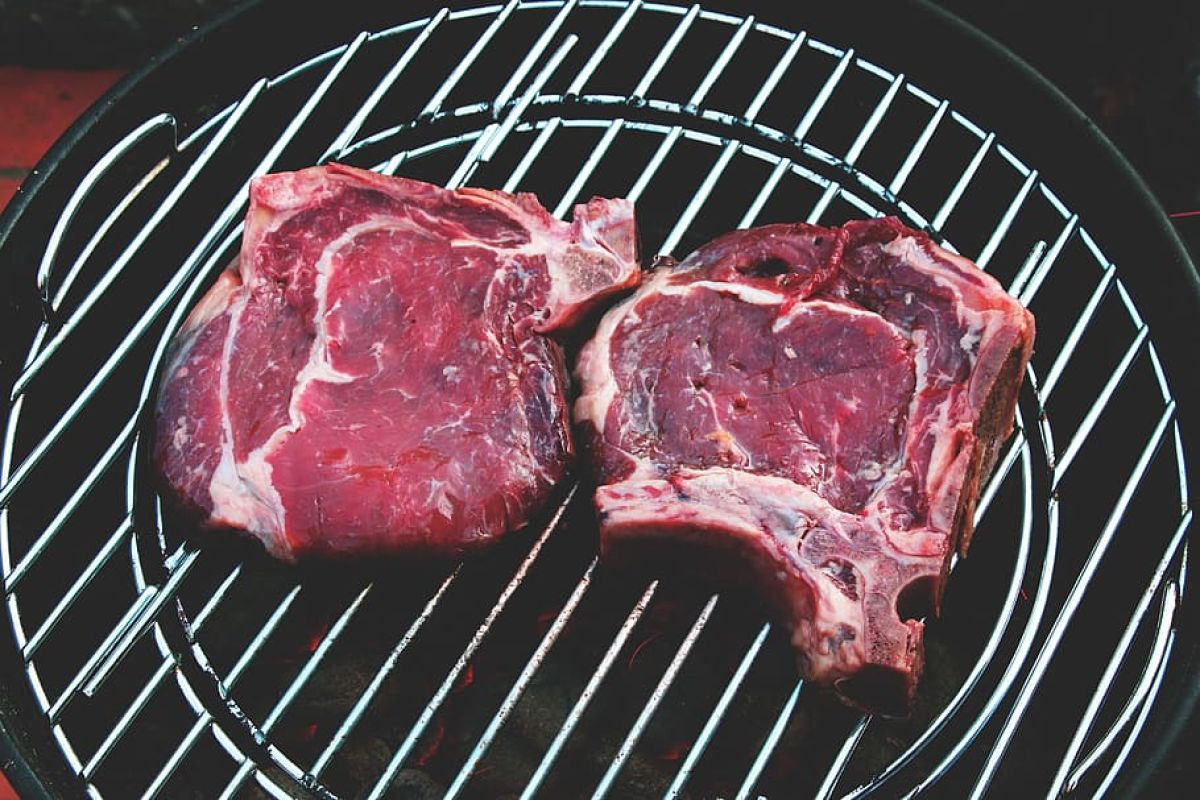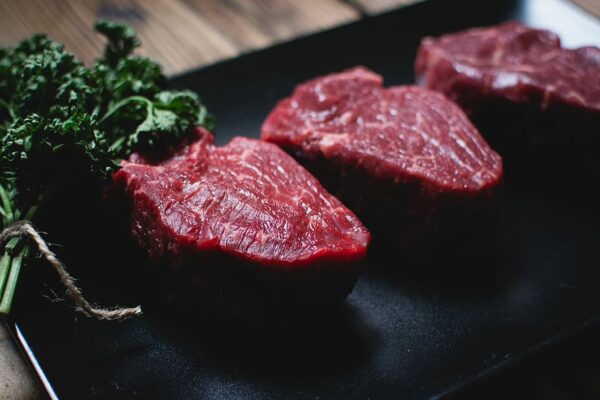Steak Night Every Night

Whether that’s at the Michelin star restaurant, which you only afford after scraping together the remainders of your student loan, or the Aldi ribeye you decided to splurge a whole £5 on – there’s nothing quite like a steak dinner.
Whatever the price, that glorious chunk of meat can be totally ruined if made wrong. Chances are that if you’re truly splashing the cash at a restaurant then badly cooked steak is not likely to be a problem. At home though…that’s a whole other story.
So, following the steak parade of Valentine’s Day, here’s a quick guide on the dos and don’ts, so you don’t make any mis-steaks.

General Tips
The first rule of good steak is finding good beef. As a student, this isn’t easy as good beef usually means expensive. But it’s not impossible – many leading supermarkets now have some aged steaks, or specially reared beef.
Fat means flavour. As a general rule, the fattier the steak, the more cooking you can allow it to have, in order to render out this fat. But, as another general rule (and this may fluctuate on personal preference), even the fattiest steak shouldn’t go over a medium. Interestingly, Richard Turner (the chef behind Hawksmoor) suggests that either end of the cooking spectrum isn’t optimum for the best steak.
Enjoying a steak ‘blue’ (meaning just seared on the outside) doesn’t allow enough time for The Maillard Reaction – basically the technical term for when a steak caramelises and gets all sexy and charred. On the other hand, enjoying a steak ‘well done’ means that all the juiciness and flavour instilled by the ageing processes is cooked out.
The 4 Main Cuts
A big decision you’ve got to make is which cut of beef you want. Generally speaking you’ve got 4 options; rump, sirloin, ribeye or fillet. Each one has different characteristics so there’s a cut for everyone, no matter their preferences.
Rump is the toughest but most flavourful of the four. It’s a muscle, which is why when compared to a similarly lean fillet, it’s a lot tougher and packs a hell of a lot of umami, beefy flavour. Rumps are generally the cheapest, and are recommended no more than medium rare/medium as the meat is very lean and is prone to being increasingly tough with more cooking.
Sirloin steaks are a cut above, with similar meatiness and a trim of fat along the top. Sirloins are also slightly more on the affordable side of things and can be found anywhere from your local Spoons to Hawksmoor.
Ribeye can be easily identified by the thin white lines of fat running through it. This is known as “marbling” which, as mentioned before, can be an indicator for how flavoursome the steak will be. Marbling can be seen in all high quality cuts of steak but is most easily seen in ribeyes. Ribeye steaks are also the common choice for artistic depictions alongside the T-bone steak.
Fillet is the last main cut on the list. In pre-packaged forms this is the cylindrical shaped piece and most expensive of all. Fillet steaks are prized for being the most tender piece of meat you can get from a cow as it comes from the back of the rib cage that is worked the least. Unlike Rump and because this meat is the least ‘worked’ or marbled, it tends to have the most subtle, delicate flavour. If cooked correctly, eating it will be the easiest experience of your life.
Others You May Come Across
T-Bone: A sirloin and small chunk of fillet separated by a T-shaped bone.
Porterhouse: A T-bone but with a larger section of fillet.
Prime Rib: The big boy of the steak world, massively marbled. With the bone in, is also called a Tomahawk.
Chateaubriand: The larger cut from the fillet loin. Like a fillet, but larger.
Season and sear
So you’ve decided on your cut of steak and brought it home…now what?
Well first off, remove the packaging and dry off the steak. You’ll find that it will be slightly damp so dabbing it with some paper towels will do the trick.
This is in preparation for the next stage; seasoning. Keeping it simple, all you want to do is generously sprinkle it with salt on all sides and leave it at room temperature for 10 to 15 minutes so that your seasoning can penetrate the muscle a little. Leaving the steak to come to room temperature will also help when cooking the steak as it prevents potential overcooking from having to bring the cold centre up to temperature.
Following this comes the cooking. Depending on your equipment and steak you might want to take different approaches, but generally you want to get a roaring hot grill or pan. Make sure to get your extractor fan on or open some windows because there will definitely be smoke.
Second tip, oil your steak and not your pan. Don’t use butter to begin with as most likely it will burn in your pan. Also, if you’re wondering why I didn’t say season with pepper before cooking it’s because pepper is a spice – like toasting spices, it can burn and go bitter. So if you love pepper, grind it over your steak toward the end of cooking.
At this point, you want to drop your seasoned steak onto the pan and let the magic happen. Depending on the size of the steak, different cooking times apply. However for a standard sized fillet (2 inches thick, 300g) leave it alone for about two minutes before flipping and leave it to cook for a further two minutes.
Toward the end of your cooking time, if you want to employ the French steak cooking method, add a large knob of butter to the pan, along with a cross-sectioned garlic bulb (cut-side face down) and some fresh herbs (think sage, tarragon, rosemary or thyme etc). As the butter quickly melts, baste the herby, garlicky, ‘steaky’ goodness back over the steak.
Once this is done, take the steak off the heat and let it rest on a plate for 5 minutes or so with some foil over it to prevent it from getting cold. Some chefs say that the resting is more important than the actual cooking. This is because heat shocks the meat, and so cutting into a poorly rested steak means all the blood and juiciness of the steak immediately runs out.
Resting your steak for an ample amount of time ensures that all juiciness stays inside for you to enjoy. And, voila, your steak is done!
The duration of the sear can be changed based on how you like your steak done, with two minutes being enough for a rare experience. For more thorough cooking, simply increase the duration you leave the meat on the heat. I wouldn’t recommend going past 4 minutes per side though unless the steak is on the thicker end of the scale or you prefer eating rubber.
At the end of the day, the way you cook a steak is what determines how delicious it is, do it right and you can make that cheap piece you found in the back of a fridge a gourmet meal for one!







